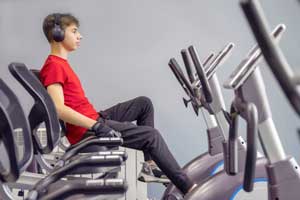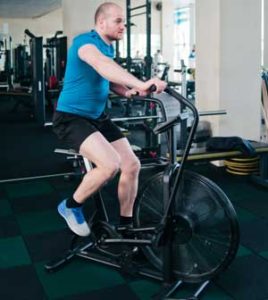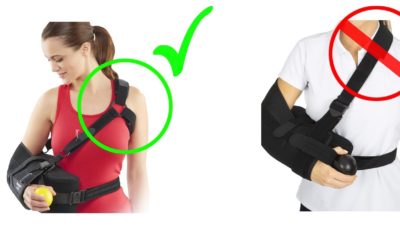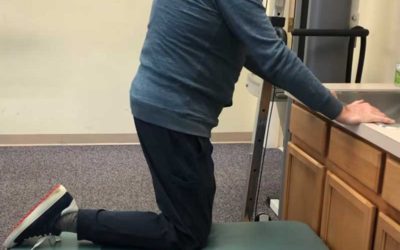How soon after knee replacement can I use exercise bike?
You can start using an exercise bike within the first 48-hours following a knee replacement surgery.
Standard practice in many physical therapy clinics is to begin using a recumbent bike with a gentle rocking motion until the knee is capable of a completing full rotation without significant pain.
When is it recommended to start using a stationary bike following a total knee replacement?
Immediately following the procedure a physical therapist will ensure the patient is safe to stand, walk, and move around the recovery room.
Many total knee replacements are performed on an outpatient basis and patients are discharged to home the same day.
A physical therapist or your surgeon may recommend you start using an exercise bike within 48-hours following surgery to keep the knee moving and reduce the chances of blood clots.
* Recommendation: when a stationary bike is used in the early recovery stages it is often recommended that the patient start with pedal rocks until the knee is capable of a full revolution without significant pain or compensation.
Phase 1 – Week 1 Post Op:
During the first week following knee replacement surgery a recumbent bike is often used to initiate joint motion.
Pedal rocks are an exercise used in which you place both feet on the pedals of the bike with the surgical knee foot on the lower pedal. You gently rock the pedals forward and back to initiate movement at the knee joint without significant pain.
Pedal rocks are performed for 3 to 5 minute episodes or as tolerated by the patient.
This exercise is usually performed 3 times a day if you have access to a recumbent or upright exercise bike at home.
As your range of motion improves you increase the size of the arcing motion until a full pedal revolution is achieved.
* TIP: Some patients prefer a reverse revolution at first until the knee range of motion has improved enough to complete a forward revolution.
Phase 2 – Week 2-4 Post Op:
As time on the exercise bike increases to 10-minutes the next phase would be to increase time walking and performing other exercises on your feet.
Once you can perform a 10-minute episode of pedaling on the exercise bike then spending more time performing weight bearing exercises are encouraged.
Some examples of weight bearing exercises include the following:
- Walking
- Elliptical Trainer
- Stairs
- Treadmill
- Stair Stepper
Phase 3 – Weeks 5-12 Post Op:
After 10-minutes of continuous cycling has been achieved, consider increasing the resistance and intensity of the time spent on an exercise bike.
Intensity may be varied by increasing the speed, moving the seat closer to the pedals to gain more range of motion, or increasing the resistance.
Interval training is another great option for increasing the intensity of time spent on an exercise bike.
A sample program may look like the following:
2-minutes warming up at a comfortable pace and seat position
2-minutes of 4 rounds of (10-seconds light resistance high speed | 20-seconds of light resistance low speed)
2-minutes of 4 rounds of (10-seconds high resistance low speed | 20-seconds of light resistance low speed)
2-minutes of high resistance low speed with a seat position close to the pedals
2-minutes cool down at a comfortable pace and seat position
What kind of stationary bike is recommended following a total knee replacement?
There are 4 common types of stationary bike:
1.) A recumbent bike – This is a bike that has a larger seat and back rest attached to the seat. The pedals are more forward and the seat level is closer to pedal level. See this post for more details >
2.) An upright bike – This bike has a smaller seat, no back support, and the seat is typically positioned above the pedals.
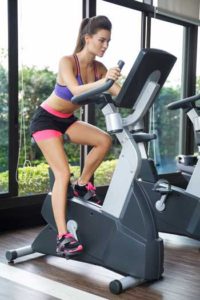
Upright-Stat-Bike-TKR-Rehab
3.) A fan bike – This is usually a version of an upright bike. It has arms that move in conjunction with the foot pedals and uses air resistance.
4.) Budget pedaler – This is a small, light weight pedal device that may be placed infront of a chair. The device is usually priced at less than $50. This device is often used for the lower body while sitting and the upper body while standing.
* Recommendation: when choosing any piece of exercise equipment the most important consideration is use… ‘Will You Use It?’
Buy something you will use. Buy something you will enjoy. Buy something that will improve your quality of life.
What if I cannot complete a full revolution on the pedals?
This video shares a simple strategy to start using a recumbent bike even if your knee flexion is limited.
* Recommendation: Unhook the strap on the pedal of your surgical side leg. Position your heel on the pedal on your surgical side leg while placing the ball of the foot on the center of the pedal on your non-surgical leg. Gently rock the pedals back and forth until you are able to complete a full revolution. Repeat the as the knee motion improves and move your seat slowly forward as tolerated.
What can I do to relax my thigh muscle?
A common report from patients is that the thigh muscle, the quadriceps, will tighten up as soon as they try to complete a full revolution on a bike.
That can happen for several reasons, but the most common is due to the body’s natural protective response. When something hurts or has the potential to hurt our body will tighten the muscles around a joint to prevent movement and prepare for pain.
One way to reduce this response is to massage the muscle. My favorite is a rolling pin massage. In this video you can see how a simple rolling pin from the kitchen will reduce pain, reduce guarding, and improve tissue mobility.
More Blog Posts …
Best Shoulder Pulleys for Frozen Shoulder for 2022
This article has been updated on 02/17/2023 by author - Anthony Maritato, PTAre Shoulder Pulley Exercises Good for Frozen Shoulder (Adhesive Capsulitis)? Yes, shoulder pulley exercises are a great way to unfreeze a frozen shoulder. A licensed physical therapist will...
When can I take off my shoulder sling after rotator cuff repair shoulder surgery?
Every surgeon will have a very specific post surgical protocol and instructions telling you exactly what you are allowed to do and not allowed to do after surgery. Most surgeons will require you to wear your shoulder sling after rotator cuff repair shoulder surgery...
2022 Guide to Buying An Elliptical After Total Knee Replacement Surgery
The Schwinn Elliptical 411 is my overall favorite pick for anyone recovering from a total knee replacement in 2022. What to expect in this article: Benefits of using an elliptical after total knee replacement Challenges of using an elliptical after total knee...
When Is Kneeling Safe After A Total Knee Replacement
Unless your surgeon specifically advised against kneeling you are generally safe to start kneeling after 6-weeks or once your surgical incision is healed.Kneeling After A Total Knee Replacement Depending on the implant and bone quality, kneeling after a knee...
Pinching Behind Your Knee After Total Knee Replacement
A common report I get from clients who are struggling to improve knee flexion is that they are feeling a pinch in the back of their knee as they try to bend it. This pinching in the back of your could may be caused by the implant pinching the soft tissue or a baker's...
What to Expect the First Week After your Knee Replacement Surgery
Week 1 After Knee Replacement Surgery If your surgery was performed in an outpatient surgery center then you would have likely been discharged to your home the day of surgery. In this article I will be discussing what you need during the first week after total knee...
How to Choose the Best Physical Therapist
There are many factors that go into choosing the best physical therapist for your rehabilitation. One such factor is access. If you are having a total knee replacement you will inevitably have questions about your incision or positioning or any number of other...
9 BEST Gift Ideas for Anyone Having A Total Knee Replacement in 2022
This article includes my favorite list of the 9 Best Gift Ideas for Anyone Having a Total Knee Replacement in 2022. Cyotherapy Moist heat Walker tray/basket Ankle & Calf Massager Rolling Pin Water Bottle Journal Audio Book Membership Meal Delivery Cryotherapy...
Tight Calf Muscle After Knee Replacement
Calf pain after a total knee replacement or other knee surgery if very common. Part of the problem is the swelling, part is weakness in the muscle and part is the dramatic change in activity level.
In this video I explain these three causes of calf pain as well as some solutions we usually recommend in the clinic. After watching this video I will share recommended exercises you can ask your therapist about.
Baker’s Cyst After Knee Replacement
A Baker's cyst resolved in only a small number of patients (15%) one year after TKA and symptoms from the cysts persisted in 31%. Cite this article: Bone Joint J 2016;98-B:1185-8.[1]What is a Baker's Cyst?If you have ever felt that painful swollen lump behind your...
